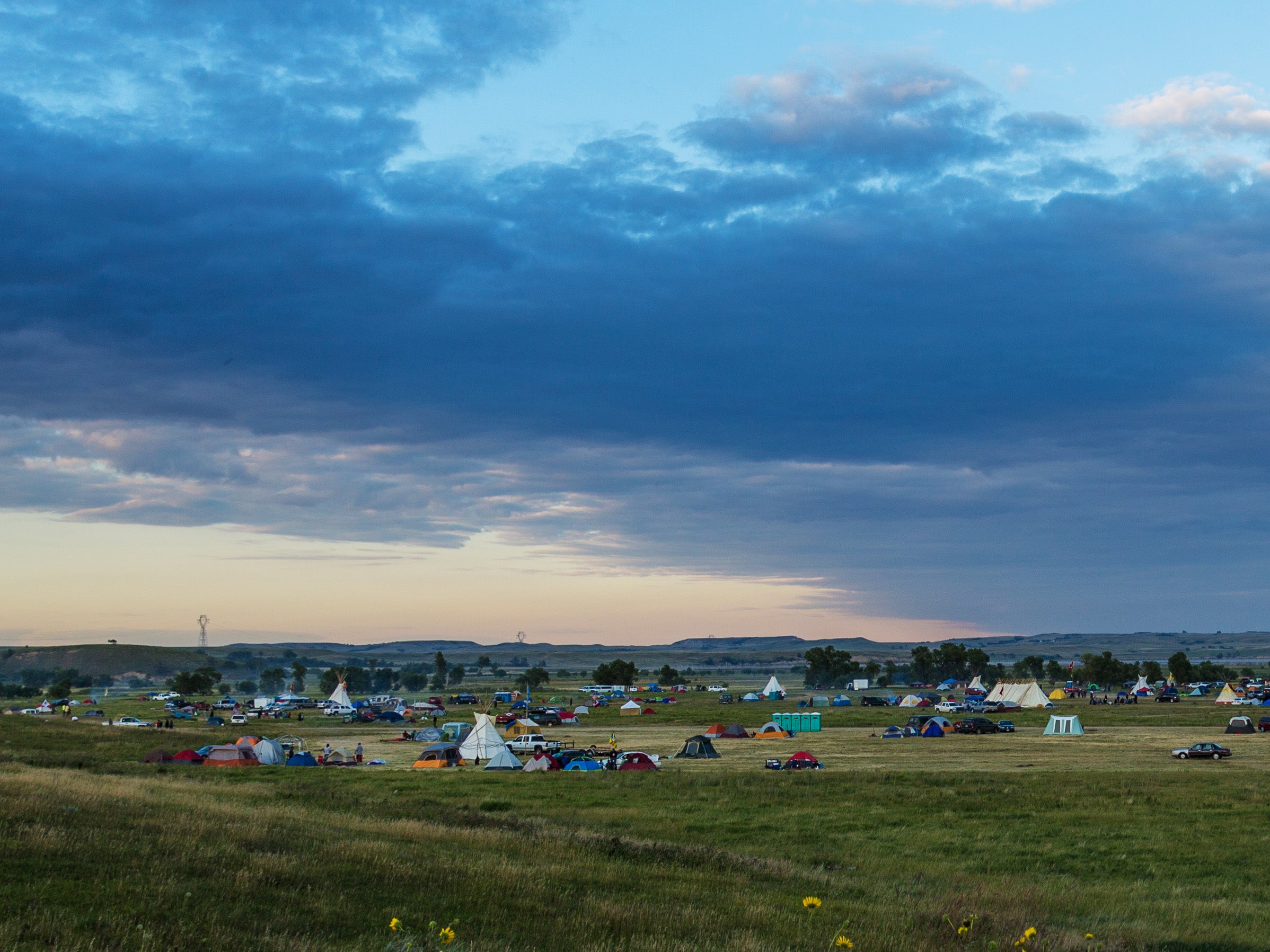We’re Missing 90 Percent of the Dakota Access Pipeline Story
The Dakota Access pipeline protest is not a violent riot; it’s a solemn struggle to protect water and culture.

This page was published 9 years ago. Find the latest on Earthjustice’s work.
12/04 – BREAKING NEWS: DAKOTA ACCESS PIPELINE EASEMENT NOT GRANTED
Over the past few months, the Dakota Access pipeline and the Standing Rock Sioux tribe that opposes this oil project went from anonymity to full blown national news coverage. Since August, the news media has been reporting on the Native Americans who have gathered in camps in North Dakota to protect sacred land and the Missouri River, the Standing Rock tribe’s sole water source. For months, we have been informed only about the most dramatic developments, but I discovered after a visit to the Sacred Stone camp two weeks ago that public understanding of what this movement is all about is based on misrepresentations. We are missing how peaceful, respectful and solemn this struggle is.
This is unfortunate because what’s happening at the confluence of the Missouri and Cannonball Rivers is a solemn struggle to protect water and culture. As I prepared to make the trip, I read articles about the risks. And I fell for it. When I was flying into Bismarck, North Dakota, with a delegation from GreenLatinos—a group of Latino advocates committed to addressing environmental issues—I was on edge. We had gone to North Dakota to learn how GreenLatinos might be able to help the tribe, yet at first I concentrated on myself. I relentlessly googled “Standing Rock Sioux tribe arrests” and related key terms to figure out where I could or couldn’t go and what I could or couldn’t do.
But all that anxiety quickly evaporated when I reached the camps. I saw that this assembly of indigenous tribes and supporters is among the most serene and peaceful groups of people I have been around. They are not unified by indignity. What unifies the thousands of water protectors who are bracing for the incoming winter is devotion and prayer. In fact, elders and tribal leaders told us repeatedly that tribal camps aren’t protests; these are ceremonies being held at a sacred place. And, they told us, they expect the behavior of their brothers and sisters to reflect that.
Even when we were talking about politics, the sacredness of it all was what tribe members conveyed as important. The respect of the people overcame any thought of animosity, and the solemnity of the place and the need to protect nature inspired peaceful unity. This indigenous vision of sacred air, sacred water and sacred land was striking to me. I live in Washington, D.C., where polarized rhetoric dominates the landscape, and where, since the presidential election season, distasteful attacks are rampant. Visiting the camps and understanding the spirituality driving this struggle against corporate profit was an eye-opening and humbling experience.
Water protectors are constantly looking after one another, helping one another. They may not have a lot, but they are willing to give everything. I learned that not just by seeing how they would offer sweaters or blankets as temperatures dropped into the 20s, but also by listening to their stories. One woman, who is now one of many who prepare meals for the camp for free, told me how she arrived with little besides her eagerness to help cook. She didn’t have a stove, yet with people’s donations she got everything she needed to help the camp in four days.
I have not seen a single news report that elevates this type of story. That’s because peace may be what we value and aspire to as a nation, but peace doesn’t generate clicks. Still, peace is what this historic indigenous gathering is all about.
At a time when we know that fake news stories are rampant, I encourage everyone to verify the authenticity of the news they read. Many news reports give the impression that the Standing Rock Sioux tribe’s struggle is chaotic and tumultuous. But that’s not the case. This movement of solidarity is filled with people who, when asked about what they need, say they need us to pray for them. Pray and do what’s right, the elders tell us, noting that they are hopeful about what’s to come.
Even with an unfriendly incoming presidential administration, I believe that if we all stand strong with the Standing Rock Sioux, make our voices heard and reach out to our elected officials in Congress, we can protect the river and the land that so many hold sacred.
To learn more about the Standing Rock Sioux Tribe’s litigation on the Dakota Access Pipeline, read the latest updates and frequently asked questions.
Established in 1989, Earthjustice's Policy & Legislation team works with champions in Congress to craft legislation that supports and extends our legal gains.